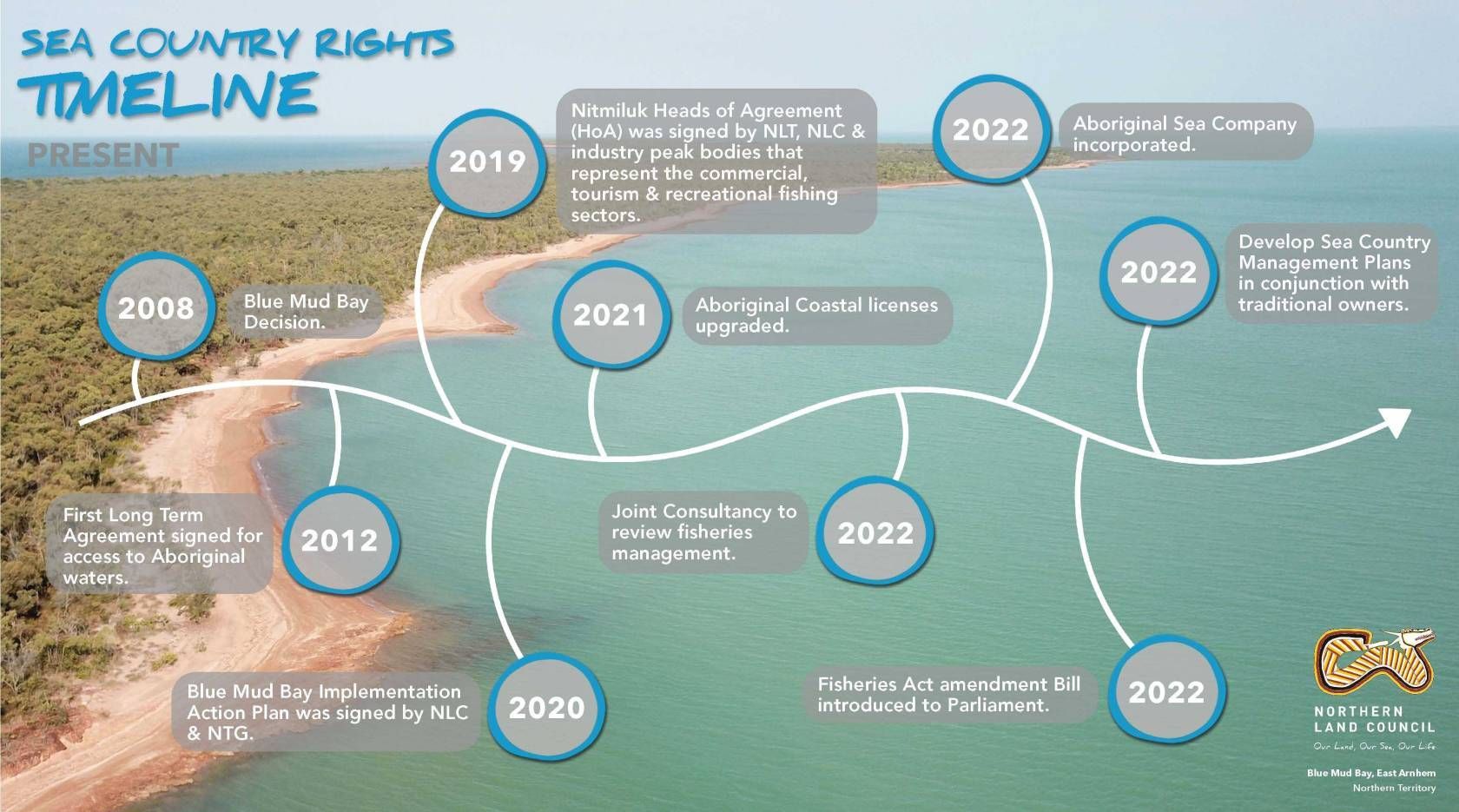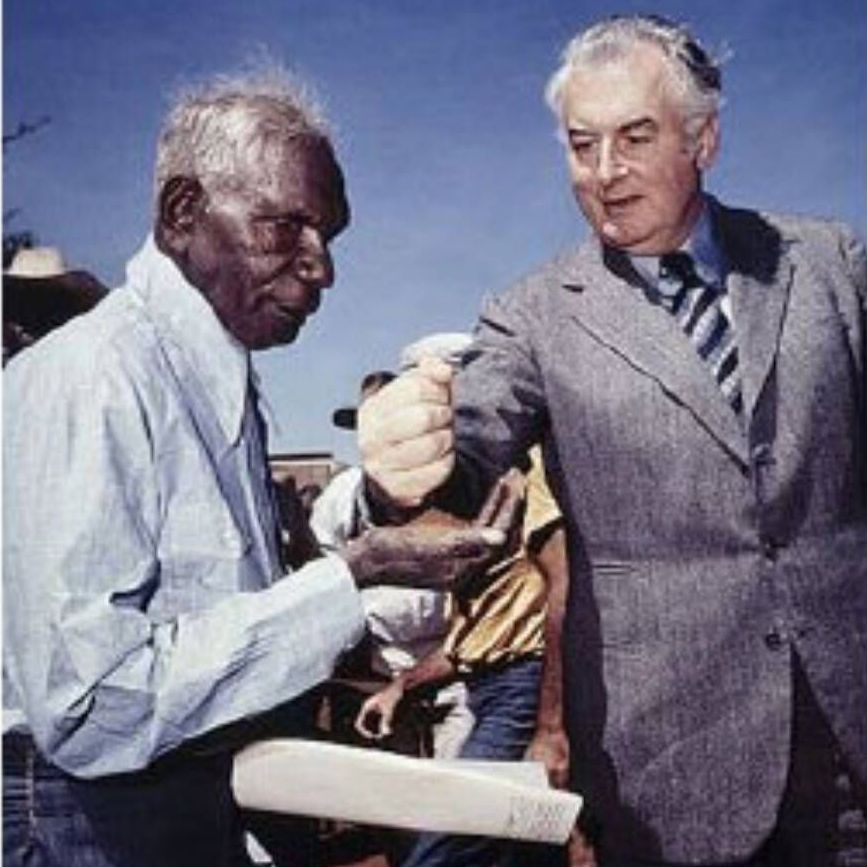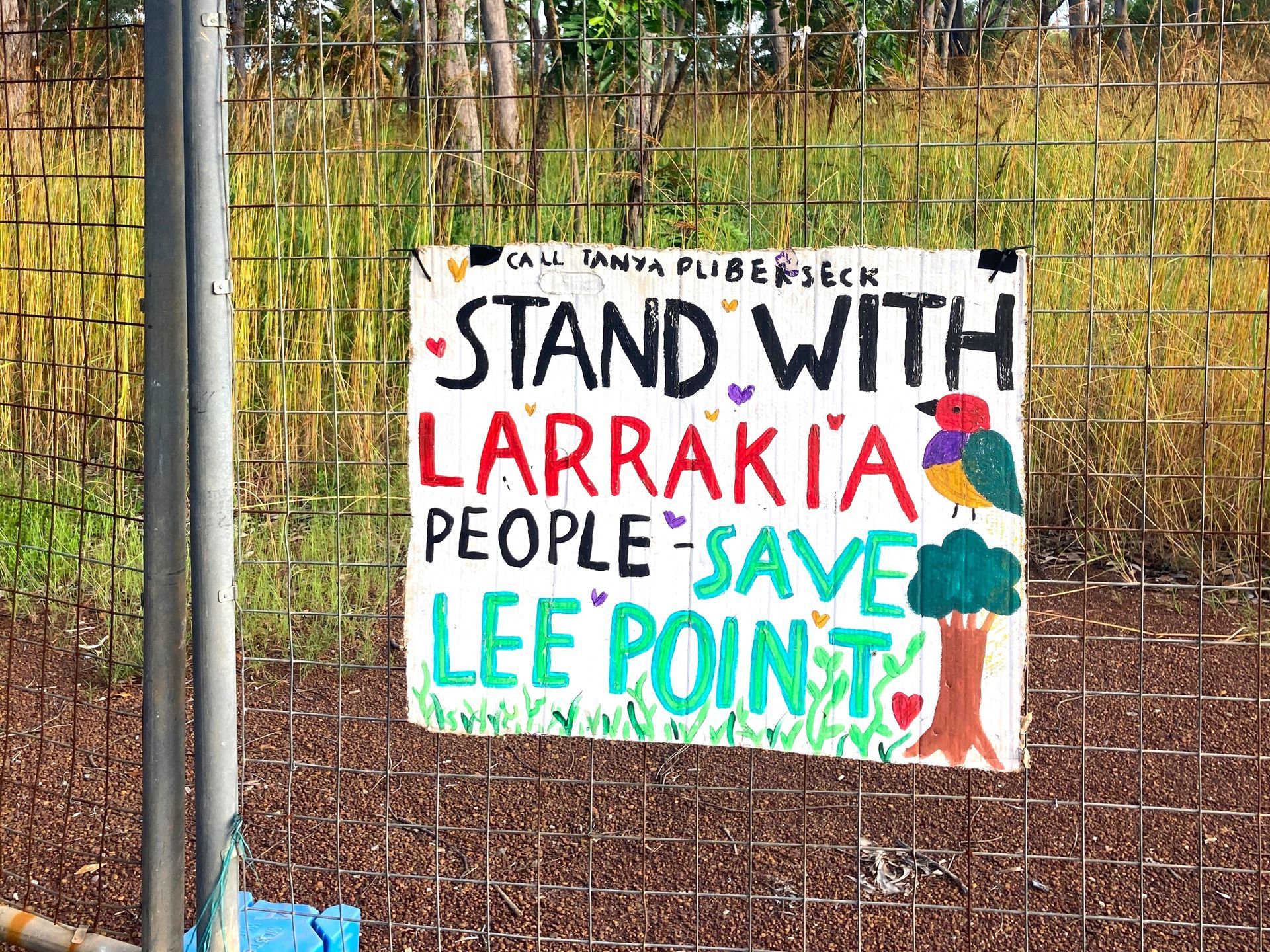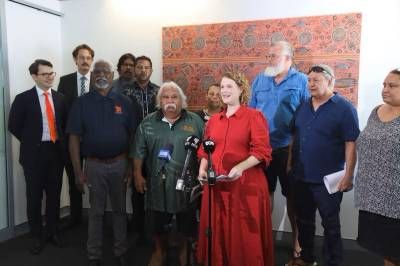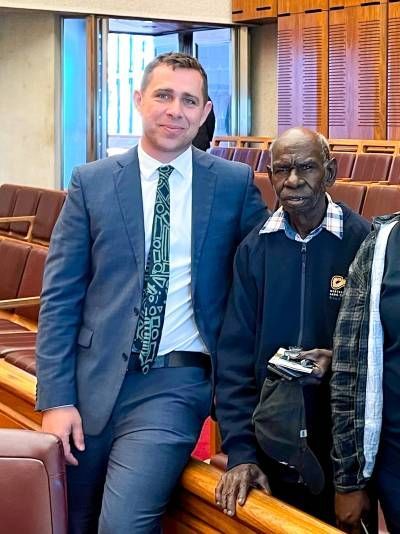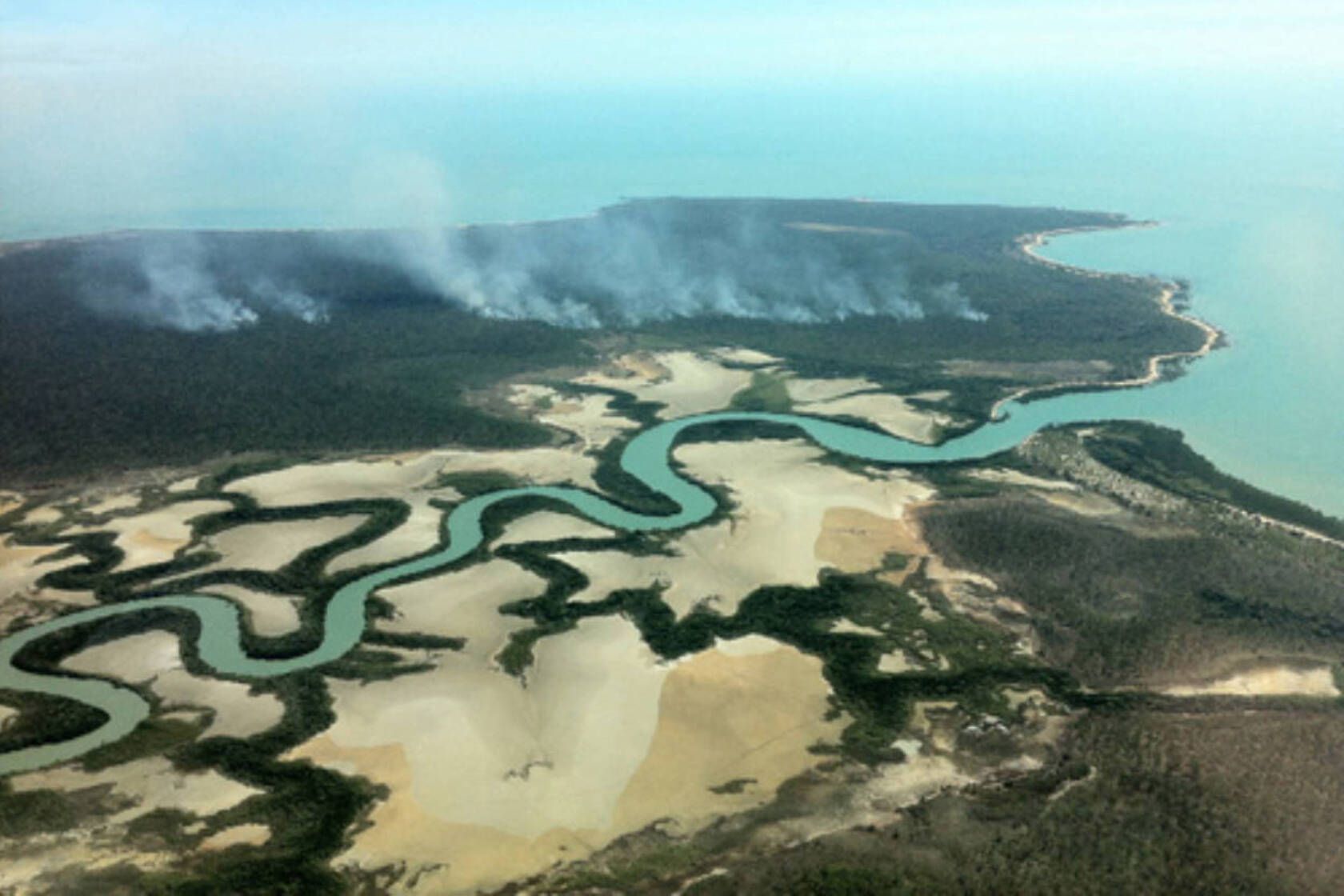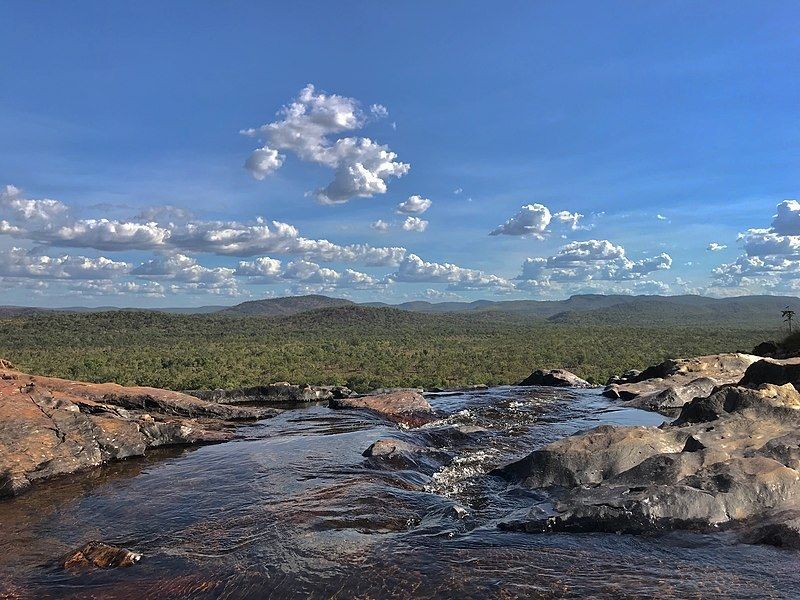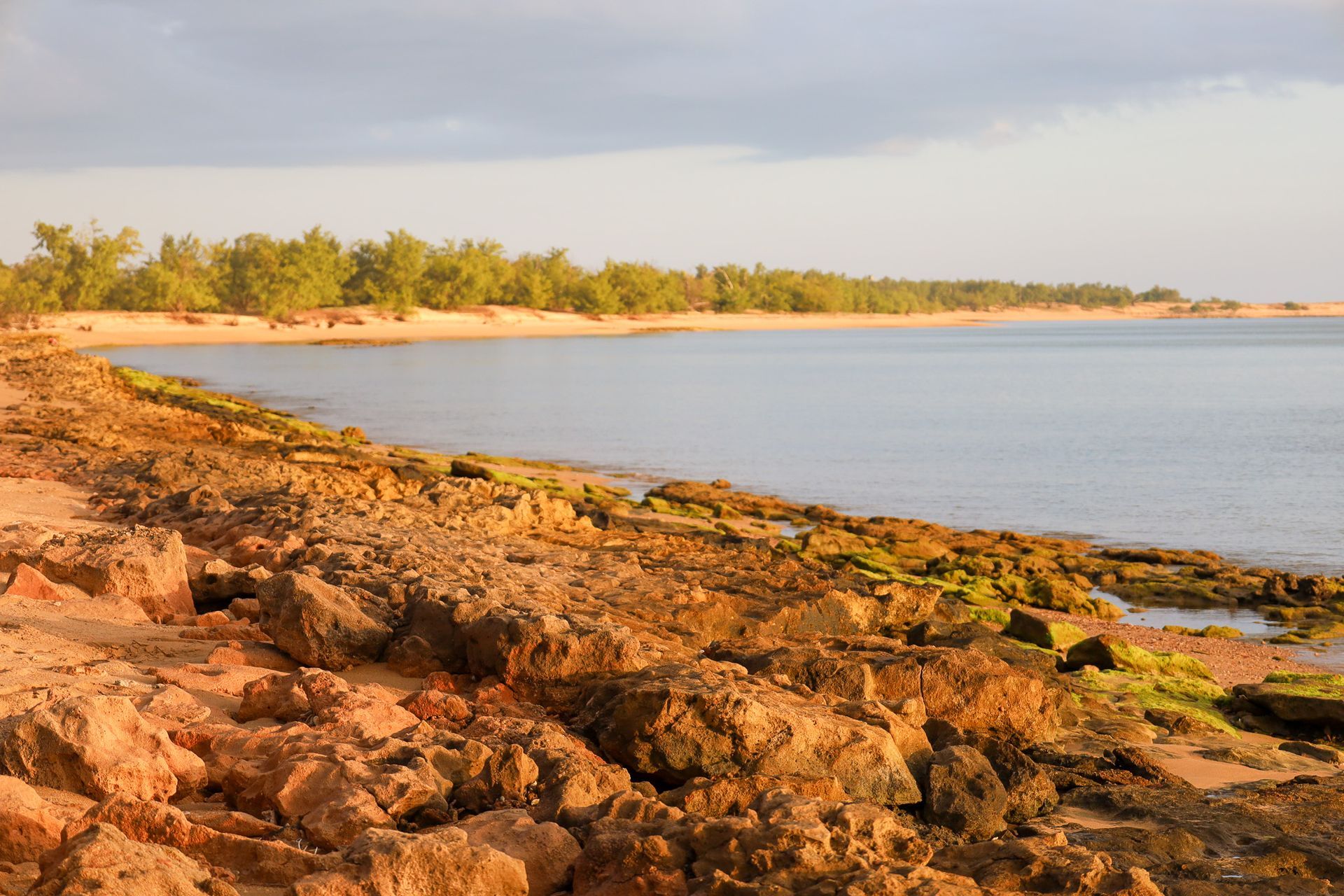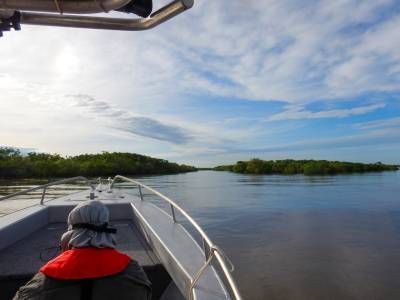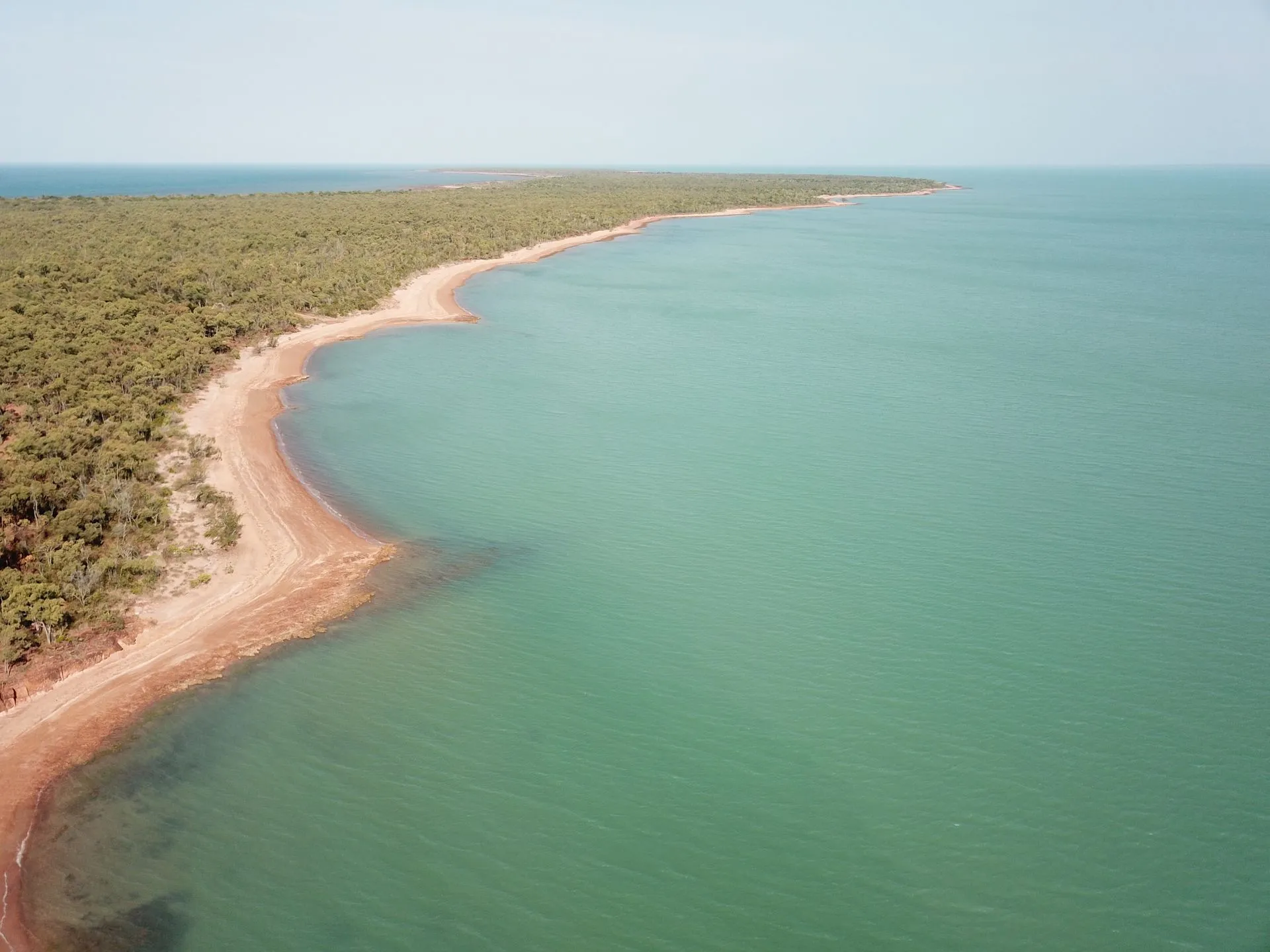Land and Sea Rights

Land rights
After many years of struggle Aboriginal law and land rights were finally recognised in Australian law in the Aboriginal Land Rights (NT) Act 1976 (ALRA).
This act recognises Aboriginal rights to land and sets up processes to win back land through Land Councils, and manage its resources.
Importantly, the act was the first attempt by an Australian government to legally recognise the Aboriginal system of land ownership and put into law the concept of inalienable freehold title. This has allowed Aboriginal peoples to retain and in some cases re-establish their cultural identity, while at the same time contributing to the peaceful and responsible development of the NT.
ALRA sets down detailed procedures for:
- the negotiation of mining agreements on Aboriginal land and the application of laws for mining on Aboriginal land
- funding of Land Councils through the Aboriginal Benefits Account (previously Aboriginal Benefits Reserve)
- a number of minor but important provisions, such as roads and entry onto Aboriginal land, a protection of sacred sites and protection of traditional rights over land
- the application of NT laws and complementary NT legislation
related stories: Land rights
Sea country rights
In 2008 the High Court of Australia confirmed that Traditional Owners of Aboriginal-owned NT coastline, have exclusive access rights to the tidal waters overlying their land.
The coastline of the NT mainland is 5,400km long and offshore islands contribute a further 5,500km of coastline. Around 55 per cent or 6,024km of this coastline is owned by Aboriginal Traditional Owner groups within the NLC region.
NT coastal and marine areas remain some of the world’s most intact environments, rich in natural resources, biodiversity and cultural heritage and support a range of growing regional and local economies and livelihoods. Sea country is very important to Aboriginal people. Sacred sites and songlines in the sea carry the same cultural importance as those on land.
The tidal waters and broader seas are important to the livelihoods of Aboriginal people living in remote coastal communities. In addition to the rights confirmed by the High Court in the Blue Mud Bay case, Traditional Owners of sea country also enjoy Native Title rights, exclusive access to closed seas, protection of sacred sites and management of Indigenous Protected Areas.
Exclusive Access to Intertidal waters
Aboriginal land is privately owned; it is not crown land, nor public land. Permission must be obtained in accordance with ALRA before entering these lands.
As a result of the Blue Mud Bay case, this also includes access to tidal waters over Aboriginal land. That means, permission from the landowner is required to access to the water and/or land between the high and low tide watermarks, regardless of whether you hold a fishing licence issued by the NT Government.
Interim arrangements were put in place in 2007, allowing all recreational and commercial fishers to access tidal waters over Aboriginal land. This arrangement ended on 31 December 2016. Since then, the NLC Full Council has waived the requirement for a permit to enter tidal waters overlying Aboriginal land in a series of waiver extensions, pursuant to section 5(8) of the Aboriginal Land Act.
On 29 July 2020, the NLC and the NT Government signed the Blue Mud Bay Implementation Action Plan, which allowed to the end of December 2022 for the government to confirm and deliver in relation to its commitments, and for the NLC to undertake further consultations with Traditional Owner groups to find out which of them wanted to include their tidal waters in the open access plan.
Closed Seas
Two sea closures have been Gazetted under ALRA. They are in the Milingimbi, Crocodile Islands and Glyde River area (1981) and the Castlereagh Bay and Howard Island area (1988). Both closed seas are adjacent to Aboriginal land and extend 2km seaward of the low tide watermark. Closed seas provide exclusive access to Traditional Owners. Permission from the landowners is required to access closed seas and can be granted through a permit.
Native Title determinations for Sea Country
Non-exclusive native title determinations cover sea country surrounding Croker Island in west Arnhem Land and in the north region of Blue Mud Bay in east Arnhem Land.
These determinations, in accordance with and subject to traditional laws and customs as recognised rights under common law, provide for Aboriginal people the ability to hunt and gather resources and practice traditions. Native title enables unobstructed access from other competing interests, including commercial operators and recreational interests.
Native Title determinations for Sea Country
All sacred sites are protected in accordance with the Aboriginal Sacred Sites Act (NT) 1989. Many sacred sites are registered in sea country. Access is not permitted within 100m of any sacred site, though some sacred sites may have more restrictive access. Visit www.aapant.org.au/sacred-sites for more information
FISHING aboriginal waters
Aboriginal waters are waters which overlay Aboriginal land, from the intertidal coastline to the tidal extent of creeks and river systems. Aboriginal culture is over 60,000 years old, and Aboriginal people have deep connections to their Sea Country, including the aquatic species which inhabit it.
In 2008, the High Court of Australia confirmed that tidal waters overlaying Aboriginal land are private property, and permission must be sought from the land owners for access to those waters.
View the following pages for information about Fishing Aboriginal Waters in the Northern Territory and how to seek access.
related stories: sea country rights
Blue Mud Bay History
In 2008 the High Court of Australia confirmed that Traditional Owners of Aboriginal-owned Northern Territory coastline, have exclusive access rights to the tidal waters overlying their land.
The coastline of the Northern Territory mainland is 5,400km long with the offshore islands contributing a further 5,500km of coastline. Around 55 per cent or 6,024km of this coastline is owned by Aboriginal Traditional Owner groups within the NLC region.
Northern Territory coastal and marine areas remain some of the world’s most intact environments, rich in natural resources, biodiversity and cultural heritage and support a range of growing regional and local economies and livelihoods. Sea country is very important to Aboriginal people. Sacred sites and songlines in the sea carry the same cultural importance as those on land.
The tidal waters and broader seas are important to the livelihoods of Aboriginal people living in remote coastal communities. In addition to the rights confirmed by the High Court in the Blue Mud Bay case, Traditional Owners of sea country also enjoy Native Title rights, exclusive access to closed seas, protection of sacred sites and management of Indigenous Protected Areas.
Exclusive Access to Intertidal waters
Aboriginal land is privately owned; it is not crown land, nor public land. Permission must be obtained in accordance with the Aboriginal Land Rights (Northern Territory) Act 1976 before entering these lands.
As a result of the Blue Mud Bay case, this also includes access to tidal waters over Aboriginal land. That means, permission from the landowner is required to access water overlying their land between the high and low tide watermarks, regardless of whether you hold a fishing licence issued by the Northern Territory government (NTG).
Interim arrangements were put in place in 2007, allowing all recreational and commercial fishers to access tidal waters over Aboriginal land. This arrangement ended on 31 December 2016. Since then, the NLC Full Council has waived the requirement for a permit to enter tidal waters overlying Aboriginal land in a series of waiver extensions, pursuant to section 5(8) of the Aboriginal Land Act.
On 29 July 2020, the NLC and the NTG signed the Blue Mud Bay Implementation Action Plan, which allowed to the end of December 2022 for the NTG to confirm and deliver in relation to its commitments, and for the NLC to undertake further consultations with Traditional Owner groups to find out which of them wanted to include their tidal waters in the open access plan. Many Traditional Owner groups agreed for their waters to continue to be openly accessed through to 31 December 2022.
As of 1 January 2023, if people wish to access Aboriginal Waters, the following access arrangement will apply:
- Recreational fishers need to apply for a Recreational Fishing Permit
- Fishing tour operators need to apply for a Section 19 Land Use Agreement
- Commercial fishers need to apply for a Section 19 Land Use Agreement
Timelines of Sea Country Rights
Information updated on 22 December 2022
1963 — 2007

2008 — Present
